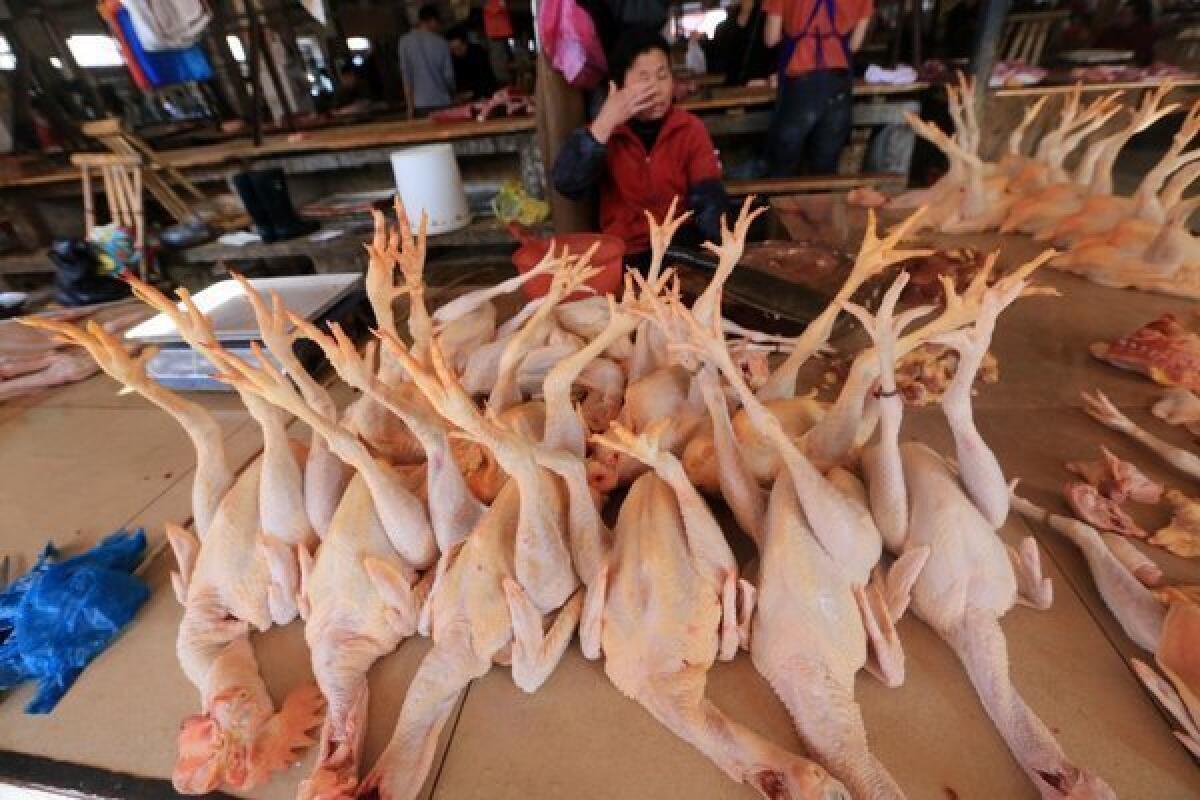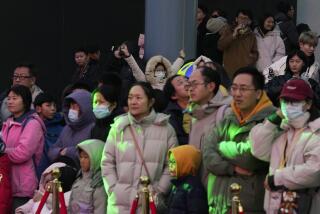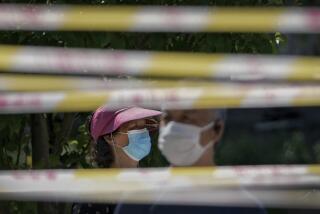China’s H7N9 bird flu death toll likely to rise

- Share via
Chinese health officials are warning that the death toll from the H7N9 bird flu is likely to rise in the weeks and months ahead.
In a report on the outbreak that began in China in February, doctors and researchers from from several public health agencies said they suspected that most of the 82 people with confirmed cases of bird flu contracted the H7N9 virus from healthy-looking animals.
“To date, the mortality rate is 21%, but since many of [sic] patients with confirmed H7N9 virus infection remain critically ill, we suspect that the mortality may increase,” they wrote in their study, published online Wednesday by the New England Journal of Medicine. “Since this H7N9 virus appears to have emerged recently to infect humans, population immunity is expected to be low, and persons of any age may be susceptible to infection.”
The report paints a fuller picture of the outbreak, which has caused Chinese people to become so panicked that one motorist felt the need to flag down police after a bird dropping landed on her car.
Cases of H7N9 infection have been confirmed in six provinces: Shanghai (31 cases), Zhejiang (25), Jiangsu (20), Anhui (three), Henan (two) and Beijing (one). The statistics paint a picture of the typical bird flu victim as an older urban male.
Chinese health officials tested 664 pneumonia patients who were sick enough to be hospitalized between March 25 and April 17. Of these patients, 81, or 12%, tested positive for H7N9 infection. In addition, 5,551 unhospitalized people with flu-like symptoms were tested, and one of them was confirmed to have H7N9.
The 82 confirmed patients ranged in age from 2 to 89 years old, but most were at the higher end of that range and 46% were at least 65. The report said that 73% of patients were men and 84% lived in urban areas.
Among the 17 people confirmed to have the virus who died, the median time from onset of illness to death was 11 days. Their deaths were attributed to acute respiratory distress syndrome or multiorgan failure.
Sixty other patients confirmed to have the H7N9 virus remain critically ill, according to the report. The outcome of their cases could push the death toll higher.
The health officials strongly suspect that most of the patients became sick through contact with infected but healthy-looking animals, mainly in live poultry markets. Only four of the patients were poultry workers -- three were responsible for slaughtering birds and one drove the birds from place to place. But at least 61 of the other patients had been shopping in a live poultry market in the weeks before they got sick. At these markets, they were exposed to pigeons, geese, quail, wild birds, pet birds, cats and dogs.
Until scientists are able to figure out exactly how the virus spreads from animals to humans, health officials should consider measures such as closing live poultry markets and culling the birds, the health officials wrote.
The confirmed patients had close contact with 1,689 other people. Among them, 1,251 had been followed for seven days, and only 19 of them developed respiratory symptoms during that time. Sixteen of those people are healthcare workers, one was a hospital patient who shared a room with an H7N9 patient, and two others were living with patients in their homes.
So far, no cases of human-to-human transmission of H7N9 have been confirmed, though they are strongly suspected in at least two family clusters.
In one cluster, a man who bought a chicken at a live poultry market is suspected of having H7N9. His father, who lives with him, and his brother, who lives nearby, had “prolonged, close, unprotected contact” with him that included “eating together, providing care, and accompanying him to seek medical care before his hospitalization,” according to the report. The father and brother both have H7N9.
The other cluster also involves a man who is suspected of contracting H7N9 after visiting a live poultry market. His daughter cared for him at home, including washing his “diarrhea-soiled underwear.” She had no direct exposure to birds or pigs, but she became ill with H7N9.
The authors of the new report were from China’s Public Health Emergency Center, the National Institute for Viral Disease Control and Prevention, and the Chinese Center for Disease Control and Prevention, among other institutions. You can read their report online here.
Return to the Science Now blog.







